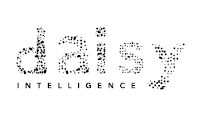
Retailers Increasing Forecasting Accuracy with AI
 Daisy Intelligence
Daisy Intelligence
As challenging and transformative as the pandemic has been for retailers, it has been a time of equally great change for the consumer - which will have long-term impacts on their behaviour. The wide availability of information and analysis has created a hyperawareness in today’s consumer. In particular, consumers are ever aware of the weakness and vulnerability of retailers and their supply chains to outside events.
For decades, shopping was simply a habit the consumer thought little about. The required changes in habits and lifestyles that the consumer has experienced demonstrated to them that their daily lives can be impacted by world events in a way that this generation hasn’t experienced before. They have greater access to news and pay more attention to stories that they may not have considered before. Having experienced panic buying and empty shelves, they are now prepared to shift their buying habits more quickly than retailers have seen before.
The Rise of the Hyperaware Consumer
As one international crisis wanes, another emerges, and with it a new set of challenges arise for the consumer and the retailer. To illustrate, consider three women out for their weekly walk – a pandemic habit adopted as an alternative to meeting for coffee inside. Their conversation turns quickly to the news from Ukraine and arrives at the widely reported impact this may have on the price of wheat. One of the women plans to buy as much bread as possible to freeze it, while another talks of seeking out cheap flour and stocking up on yeast to start making her own bread. Not only are they paying attention to this element of the news, but they are also preparing to make pre-emptive changes to their buying habits in light of it, aware that shortages and price rises may not be far away.
Retailers are now dealing with a new hyperaware consumer; one that is better informed than ever before, who has experienced the reality of society wide changes in lifestyle and freedoms overnight, and who is quick to anticipate and prepare for future changes. This makes forecasting extremely challenging for retailers that are relying on traditional analytical methodologies.
Traditional forecasting approaches use historical trends. However, in this current climate, and with the hyper-informed consumer, relying on those methodologies is especially ineffective for delivering forecasts that meet even the industry standard levels of accuracy. According to the Institute of Business Forecasting, this is about 60% for SKU-store level forecast.
How AI-Based Forecasting is Propelling Retailers to Success
So, how are Merchants ensuring that their forecasting is adapting and becoming even more accurate in this new retail environment? This is where AI, specifically reinforcement learning, is emerging as the leading-edge solution. Using AI has the substantial advantage of not relying on representative long-term histories and trends. Instead, it learns and improves based on very recent data - running millions of scenarios in a virtual environment that is beyond the capabilities of anything that has been used historically.
At the core of what makes it so powerful, besides the sheer speed, computational power, and ability to continually learn, is its ability to leverage what is known as the Halo Effect - the relationships between the products in a retailer's assortment. Incorporating Halo Effects into forecasting dramatically improves accuracy as Halo Effects tend not to materially change over time, irrespective of how customer behaviour is changing. I.e., how a customer uses a product typically doesn't change.
In our example, if the consumer is changing their purchase behaviour around bread products and flour as they pantry load, then Merchants need to fully understand the Halo impact and have strategies for the promotion and pricing of related items such as butter, jams, peanut butter, and bread substitutes. Using only the sales history of an item to forecast its future without relating it to all other associated products using AI is a lost opportunity.
AI-based forecasting that incorporates Halo Effects has been incredibly successful for leading retailers, with some approaching an accuracy of greater than 90% (compared to the industry standard of 60%). This improves the ability to forecast and anticipate behaviour changes, thus avoiding the dramatic impact of revenue lost due to stockouts and margin erosion due to shrink or markdowns.





